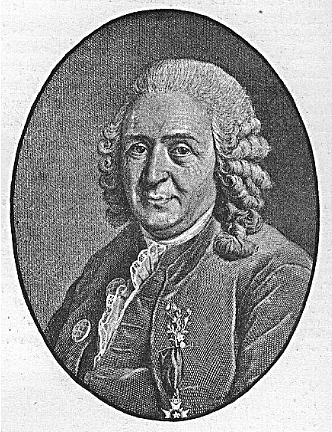 |
 |
 |
 |
 Carolus Linnaeus, or Carl Linné, 1707-1778, Swedish
botanist.
Carolus Linnaeus, or Carl Linné, 1707-1778, Swedish
botanist.In 1730, Linnaeus was appointed assistant to the professor of Botany in Uppsala, Sweden. In his research he made considerable use not only of direct observation, but also of those who came before him: his botanical knowledge shows the influence of Nehemiah Grew, and his zoology is thoroughly indebted to John Ray. His Flora Lapponica (1737) contained the results of his expedition through Swedish Lapland in 1732. In his most important works, Systema naturae (1735) and Genera plantarum (1737), Linnaeus approached the problem of classifying species empirically: beginning, not as most of his predecessors did with large classes, but with the individual species themselves, which he then arranged according to their similarities -- he worked up from specimen to kingdom rather than the other way around. Linnaeus established the modern binomial system of nomenclature (genus name plus species name) for plants and animals. The naming system was borrowed from Casper Bauhin, but Linnaeus gave it a more sound theoretical basis by establishing the beginnings of the modern system of kingdoms, classes, genera, and species, replacing (but borrowing from) the system of John Ray. (The phylum awaited the work of Baron Cuvier in 1799). A tenth edition of the System naturae (1758) included a classification of over four thousand species of animals, including human beings -- which Linnaeus was the first to designate Homo sapiens.
He continued the work in Classes plantarum (1738). In 1742 he was named professor of botany at Uppsala, and in 1751 he published Philosophia Botanica; in 1753 came Species plantarum, followed by Genera morborum (1763).
Linnaeus's students accompanied Captain Cook as naturalists on his voyages, including one to Botany Bay in 1770. The Linnaean Society was founded in 1788 to continue his work; it was in front of the Society that Charles Darwin read the first version of his theory of natural selection (1858).